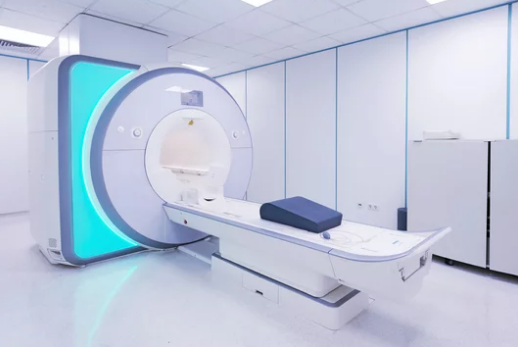At first glance, magnetic resonance and magnetic confinement belong to entirely different worlds. One lies in the realm of hospitals and medical imaging, while the other is at the frontier of energy research, aiming to replicate the power of the sun on Earth. Yet, when you strip these disciplines down to their scientific core, both rely on the precise control of magnetic fields and the extraordinary properties of superconductors.
From diagnosing disease to containing plasma hotter than the sun, these two applications demonstrate how the same science can transform both medicine and energy. Understanding this shared foundation is essential to appreciating how advances in one field inspire progress in the other.
What Is Magnetic Resonance?
The Science Behind MRI
Magnetic resonance is best known through its medical application: Magnetic Resonance Imaging (MRI). This technology uses strong magnetic fields to align hydrogen protons in the body. When radiofrequency pulses are applied, the protons emit signals, which are converted into detailed, high-resolution images of internal tissues.
Key elements of MRI include:
- Superconducting magnets that produce stable fields up to 7 Tesla.
- Cryogenic cooling systems that allow superconductors to function without resistance.
- Magnetic field uniformity to ensure image clarity and diagnostic accuracy.
MRI has revolutionized healthcare, but its physics extends far beyond the hospital.
What Is Magnetic Confinement?
The Challenge of Fusion Energy
Nuclear fusion—the process that powers the stars—requires fuel heated to over 100 million degrees Celsius. At these temperatures, atoms exist as plasma, a soup of charged particles that cannot touch reactor walls without cooling or causing damage.
Magnetic confinement uses powerful superconducting magnets to suspend and control plasma inside donut-shaped devices called tokamaks or more complex stellarators. These magnetic “cages” keep plasma stable long enough for fusion reactions to occur, releasing enormous amounts of clean energy.
The Shared Science of Resonance and Confinement
Superconductors at the Core
Both MRI and fusion reactors depend on superconductors to generate extremely strong magnetic fields. Traditional low-temperature superconductors have already proven effective, but the development of high-temperature superconductors (HTS) is revolutionizing both fields.
- In MRI: HTS reduces cooling requirements, lowering costs and improving efficiency.
- In Fusion: HTS allows magnets to reach strengths of 20 Tesla or more, enabling compact reactor designs.
Precision Magnetic Fields
In MRI, even the smallest distortion in a magnetic field can blur an image. In fusion, similar imperfections can destabilize plasma, causing disruptions that halt reactions. The technology developed for MRI—gradient control, field uniformity, and error correction—has found direct application in fusion research.
Imaging and Real-Time Diagnostics
MRI excels at imaging internal structures without invasive procedures. Inspired by this, fusion researchers are creating plasma imaging systems that let scientists “see” inside a reactor, monitor turbulence, and detect instabilities in real time. These diagnostics are critical for keeping plasma stable during experiments.
Computational Advances
Machine learning and advanced algorithms originally designed to sharpen MRI scans are now being adapted for fusion plasma simulations. These tools help predict and prevent instabilities before they happen, accelerating the path toward sustainable fusion energy.
Case Studies: Where the Two Worlds Meet
ITER: The Largest Fusion Experiment
The ITER tokamak in France, one of the most ambitious energy projects ever undertaken, relies heavily on superconducting magnets that share design principles with MRI systems. Lessons from decades of MRI magnet engineering—especially in cryogenics and stability—have directly influenced ITER’s construction.
Compact Fusion Reactors
Private companies like Commonwealth Fusion Systems (CFS) and Tokamak Energy are developing smaller, more efficient reactors using HTS magnets. Their designs echo advances first pioneered in MRI technology, showing how medical science indirectly accelerates clean energy innovation.
Shared Expertise
It’s not just technology that overlaps. Engineers and physicists who once worked on MRI development are now part of fusion projects. This cross-disciplinary collaboration highlights how breakthroughs in one field can catalyze progress in another.
Why This Shared Science Matters
Healthcare and Energy: Parallel Benefits
Magnetic resonance has already saved millions of lives through better diagnostics. Magnetic confinement has the potential to save billions more by delivering limitless, carbon-free energy. Both rely on the same principles of magnetism, superconductivity, and precision control.
The Power of Interdisciplinary Innovation
The link between MRI and fusion demonstrates the value of cross-disciplinary science. Innovations rarely stay confined to one sector. Instead, they leap across boundaries, enabling progress in unexpected areas. What was once a tool for medical imaging may ultimately help humanity contain a miniature star on Earth.
Conclusion: Two Paths, One Foundation
Magnetic resonance and magnetic confinement may serve different purposes, but they are built on the same scientific bedrock: the mastery of magnetic fields. One allows us to see inside the human body; the other could one day power entire civilizations.
By sharing technologies, materials, and expertise, these two fields show us a profound truth: science advances fastest when disciplines converge. The magnets that guide doctors in saving lives may also guide humanity toward solving its greatest energy challenge—proving that resonance and confinement are, indeed, a shared science.
Also Read :
